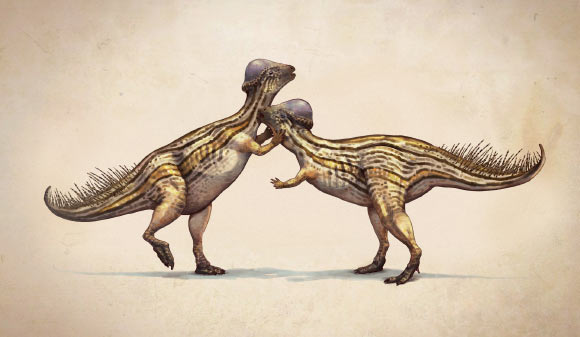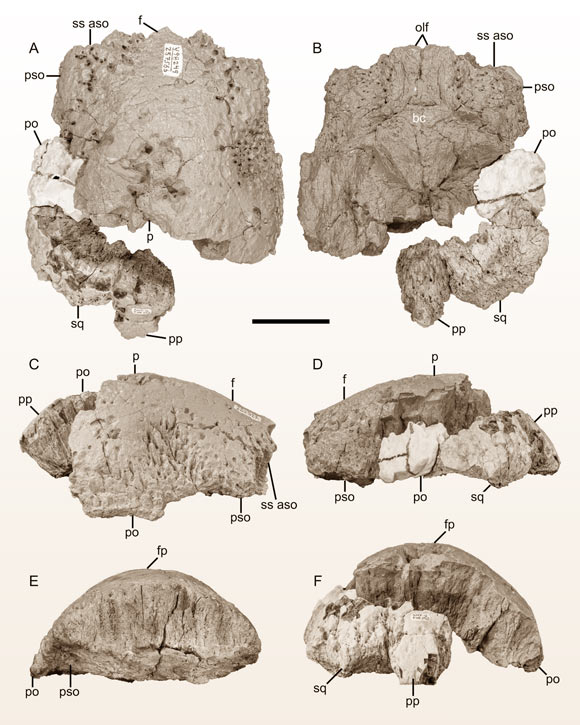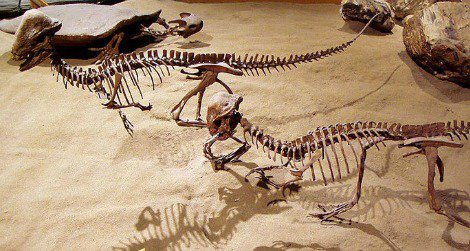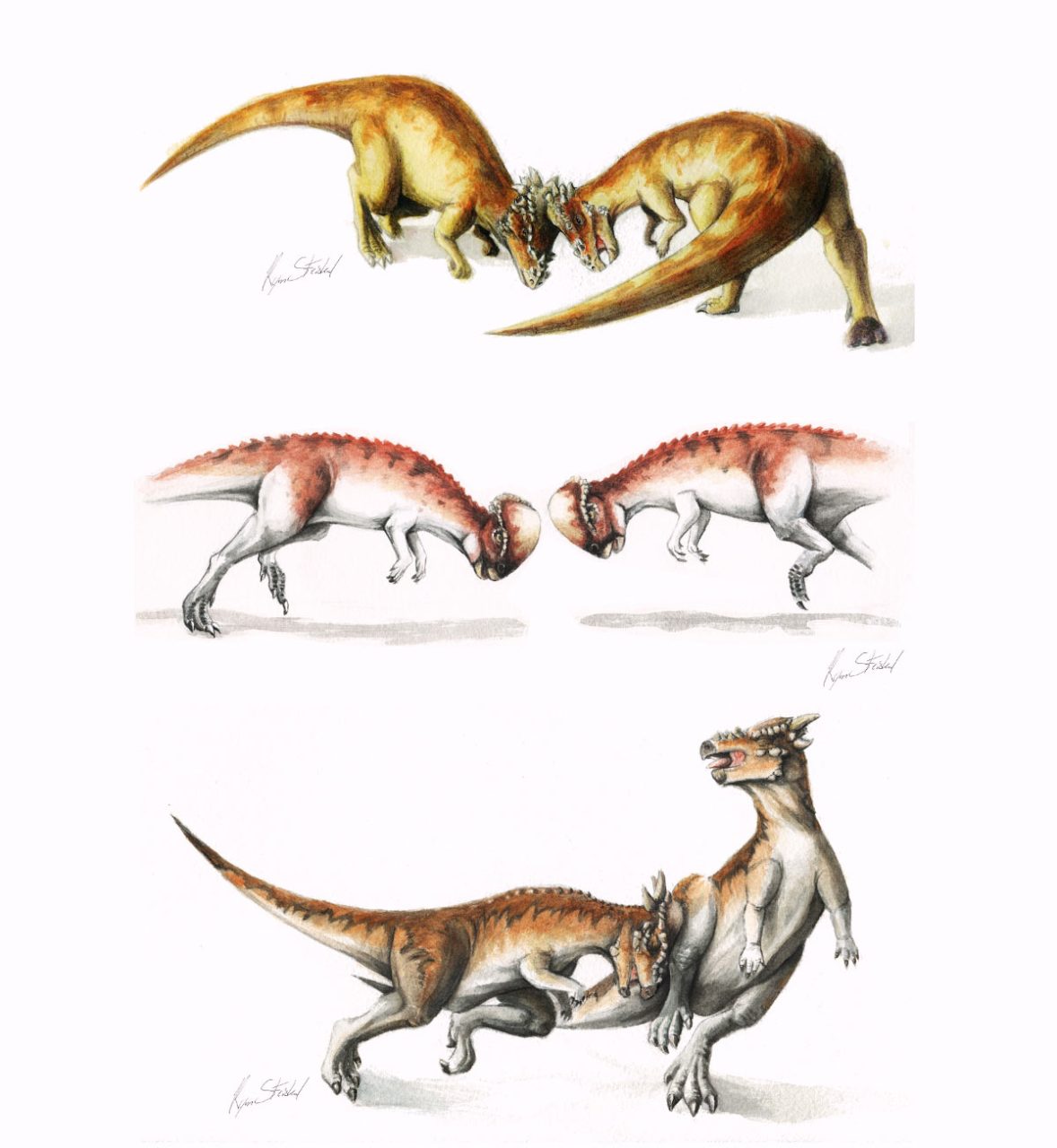A new genus and species of pachycephalosaurid dinosaur has been described from a partial skull found in Montana, the United States.

Life reconstruction of Prenocephale prenes, a distant relative of Platytholus clemensi. Image credit: Antonin Jury / CC BY-SA 4.0.
The newly-identified species roamed our planet during the Late Cretaceous epoch, around 68 million years ago.
Scientifically named Platytholus clemensi, it belonged to the clade Pachycephalosaurinae within the family Pachycephalosauridae, a diverse group of bipedal, herbivorous dinosaurs.
Also known as dome-headed or bone-headed dinosaurs, these creatures are characterized by a large, bony dome atop their skull; a short, thick neck; short forelimbs; and powerful hind limbs.

The partial skull of Platytholus clemensi was found in the lower third of the intensely sampled Hell Creek Formation on the Charles M. Russell National Wildlife Refuge in Garfield County, northeastern Montana.
“The new species is intermediate in size between the small-bodied Sphaerotholus species and the largest pachycephalosaurid, Pachycephalosaurus wyomingensis that are well represented by numerous specimens from the Hell Creek Formation,” said Chapman University paleontologist John Horner and colleagues.
“It suggests a diverse set of taxa-partitioned ecological niches by body size.”

The holotype of Platytholus clemensi. Scale bar – 5 cm. Image credit: Horner et al., doi: 10.1080/02724634.2023.2190369.
Platytholus clemensi had a relatively low, broad dome and unique imbricated roof tile-like ornamentation.
“The abundance of neurovascular canals passing through the dome to the ectocranial surface suggests that a structure of some kind, possibly with a vertical structural framework, existed on the surface of the dome at least during the period of time when dome inflation occurred based on the presence of the major diplotic neurovascular network,” the paleontologists said.

Interestingly, the team’s analysis suggests that Platytholus clemensi is more closely related to Prenocephale prenes, a small pachycephalosaurid dinosaur from the Early Maastrichtian of Asia, than to any of the previously described species from the Hell Creek Formation or Maastrichtian of North America more generally.

“The new species shows that pachycephalosaurids were more diverse immediately prior to the end-Cretaceous bolide impact than previously appreciated, and that they may have tiered niches in part by size, both of which have implications for ecological dynamics of dinosaur communities in a key period of their evolutionary history,” the authors said.
Source: sci.news








